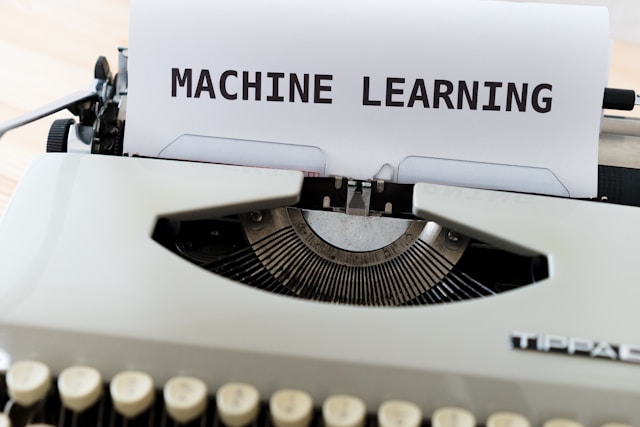Artificial intelligence utilizes Natural Language Processing to empower computers with the capability to understand, dissect, and induce mortal language. By bridging the gap between human communication and computational systems, NLP empowers various applications, from chatbots to voice assistants. We’ll explore the essential aspects of NLP, from computational linguistics to speech recognition, shedding light on how machines process and interact with language.
What is Natural Language Processing (NLP)?
Natural Language Processing (NLP) refers to a branch of AI focused on enabling computers to understand, analyze, and generate human language in a manner that is both valuable and meaningful. NLP combines computational linguistics with machine learning and natural language understanding (NLU) to break down language complexities.
How Does NLP Work?
NLP works by using algorithms and models to process and analyze human language. These models learn from vast datasets and improve over time through machine learning. Key tasks within NLP include text mining, speech recognition, and machine translation, all of which contribute to refining language models visit casino en ligne france.
The Importance of NLP in Today’s World
The field of NLP is evolving rapidly and plays a significant role in enhancing user experience and increasing efficiency across various industries. Applications such as voice assistants, chatbots, and search engines all rely on NLP to interpret and generate language. From text mining to sentiment analysis, NLP impacts how businesses, healthcare, and even entertainment industries communicate with consumers.
Key Components of NLP
NLP is built on several components that allow machines to interact effectively with human language. These components include natural language generation (NLG), natural language understanding (NLU), and machine translation. Let’s break down these components:
Computational Linguistics: The Foundation of NLP
Computational linguistics is the study of the computational aspects of the human language capacity. It serves as the backbone of NLP. It involves tasks such as parsing, syntactic analysis, and semantic interpretation, which help computers gain deeper insights into the structure and meaning of language.
Natural Language Understanding (NLU): Understanding Meaning
Natural Language Understanding (NLU) is a crucial aspect of NLP that focuses on helping machines understand the meaning behind words, sentences, and texts. It involves tasks like named entity recognition, part-of-speech tagging, and coreference resolution, where the system identifies entities such as names, dates, and objects within a sentence. With NLU, machines can understand the context of a conversation and respond appropriately.
Key NLP Applications
NLP applications are wide-ranging, and their potential continues to grow with advances in AI. From speech recognition to machine translation, NLP powers several tools that make our daily lives more convenient.
Text Mining: Extracting Valuable Insights
This technique enables the extraction of valuable patterns, trends, and insights from large volumes of text. It’s commonly used in various industries, such as business analytics, sentiment analysis, and medical research. By applying machine learning algorithms to large text datasets, businesses can uncover actionable insights from social media posts, reviews, and articles.
Speech Recognition: Turning Voice Into Text
Speech recognition is a key area of NLP that focuses on converting spoken language into written text. It allows voice-controlled systems such as Siri, Google Assistant, and Alexa to understand spoken commands and respond effectively. This technology uses acoustic models, language models, and deep learning techniques to process and understand speech in real-time.
Machine Translation: Breaking Language Barriers
Machine translation is widely used in translation services like Google Translate and real-time communication apps. By leveraging deep learning models and large bilingual datasets, machine translation systems continuously improve to provide more accurate translations. This technology allows businesses to expand their reach globally, making content accessible in multiple languages.
Sentiment Analysis: Understanding Consumer Sentiment
Sentiment analysis involves analyzing text data to determine the underlying emotions, opinions, or sentiments. Businesses use sentiment analysis to assess customer feedback, social media comments, and product reviews. By understanding the sentiment of a piece of text, companies can gauge consumer satisfaction, identify potential issues, and improve their products or services.
Advanced Topics in NLP
NLP is constantly evolving, and researchers are continually developing advanced models and techniques that push the boundaries of what machines can do with language.
Natural Language Generation (NLG)
NLG systems can create content automatically based on structured data, making it useful in applications like automatic report generation, content creation, and personalized messages. For example, NLG is commonly used in the financial industry to generate automated reports or in e-commerce to create personalized product descriptions.
Dialogue Systems
Dialogue systems are conversational agents that allow machines to engage in human-like conversations. These systems rely on NLP to interpret user input, maintain context, and generate appropriate responses. Dialogue systems can be found in customer service chatbots, virtual assistants, and automated help desks. They allow for more personalized, real-time interactions between machines and users.
The Role of AI in NLP
Artificial Intelligence (AI) is the driving force behind the rapid development of NLP. Through techniques like deep learning, reinforcement learning, and supervised learning, AI helps machines perform complex language tasks. With continued advances in AI, we can anticipate even more accurate text mining, machine translation, and sentiment analysis in the near future.
Conclusion
Natural Language Processing (NLP) is an ever-evolving field that holds immense potential to revolutionize the way we communicate with machines. From computational linguistics to dialogue systems, NLP has applications in numerous industries, improving user experience and providing businesses with valuable insights. As AI and machine learning continue to advance, NLP will remain a key player in transforming communication across the globe.


